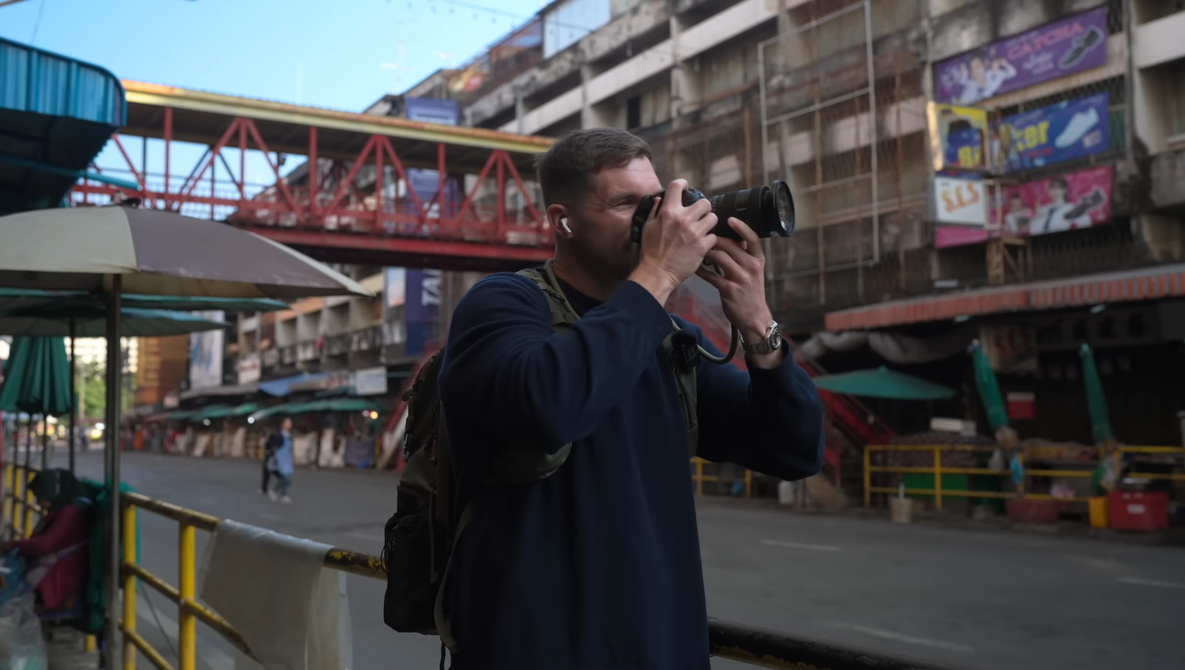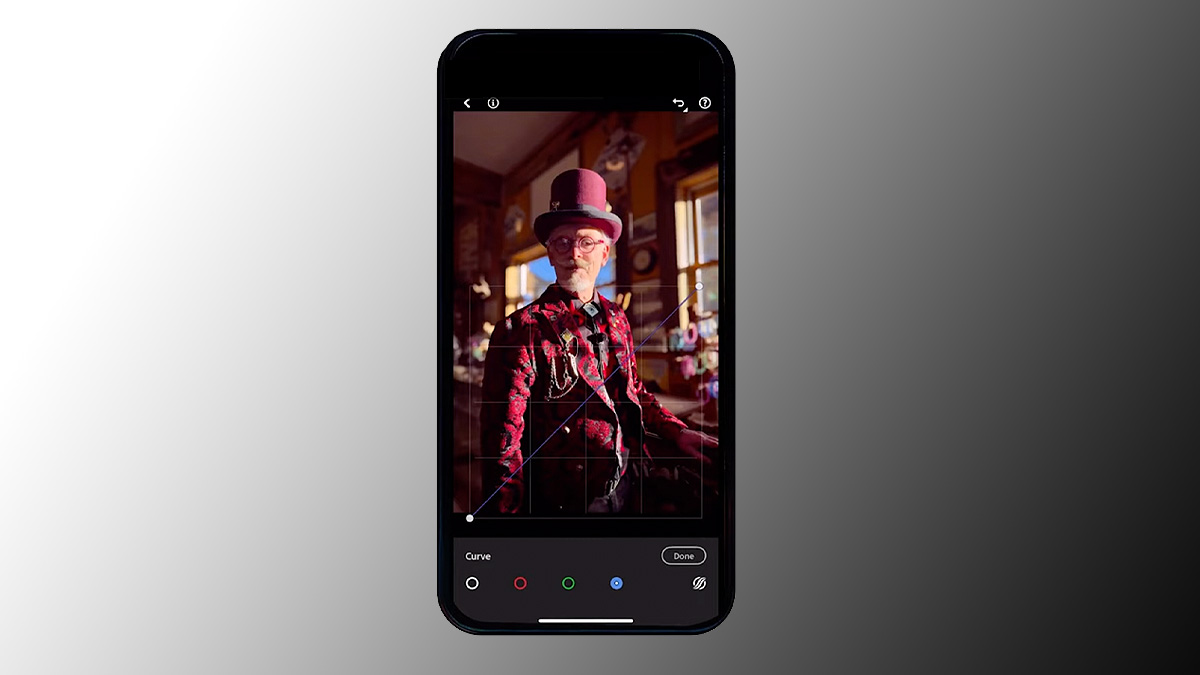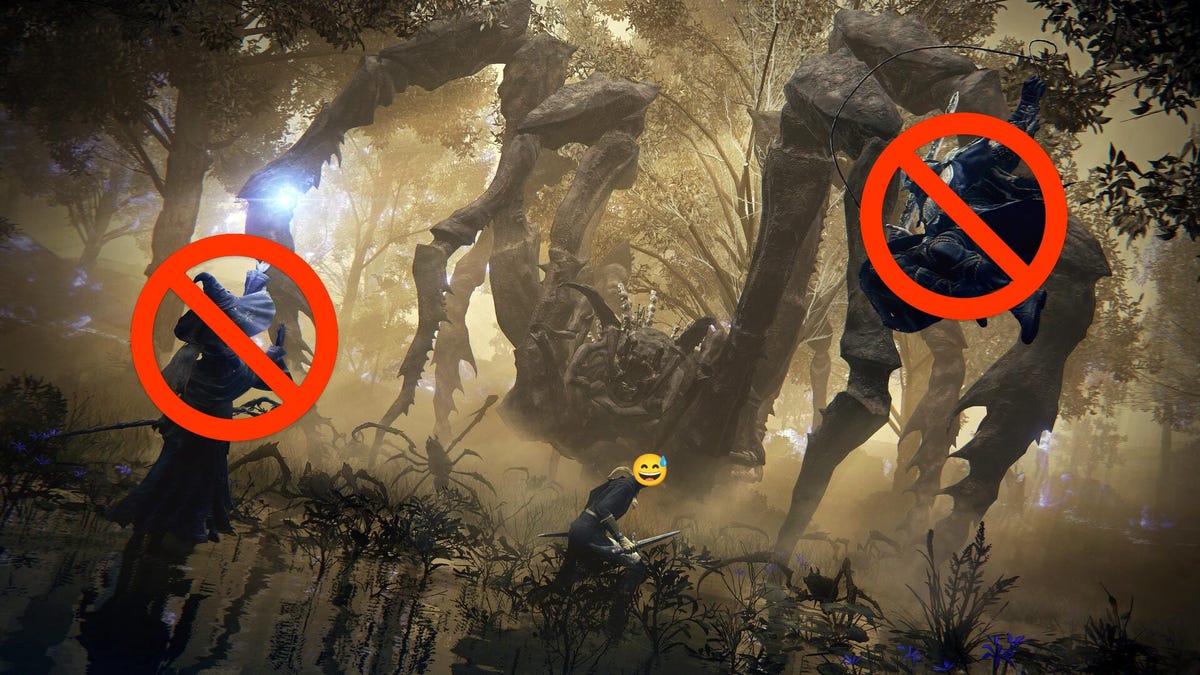Why Did Celebrity Preacher Aimee Semple McPherson Mysteriously Disappear?
Listen and subscribe on Stitcher, Apple Podcasts, Spotify, and all major podcast apps. Ella Fetter: Dylan, I want to tell you a story today about a woman who disappeared from the Ocean View Hotel in Venice Beach in 1926. Have you been to Venice Beach? Dylan Thuras: Yeah, I have been to Venice Beach. You know, Venice Beach is like oily muscle men. It’s a little grody. I kind of imagine cute girls in spandex on roller skates. That’s what I think of when I think of Venice Beach. I think it’s slightly grody, kind of really L.A. scene. Ella: Yeah, definitely not fancy, but lively, right? Dylan: Yeah, yes, definitely lively, yeah. Ella: So, actually, Venice started off as its own little resort town separate from L.A., and back in the 1920s, it was a place to go if you wanted a lovely seaside escape. The Ocean View was one of a few hotels where you’d just unwind, you’d have a meal, get some sun on the beach. The Ocean View building is actually still there today, and you would probably walk past it without noticing. It’s this white block. It doesn’t really stand out except for this thing that happened on May 18th, 1926. That day, the Ocean View had a very famous guest. She was one of the biggest names in L.A., Aimee Semple McPherson. Have you heard of her? Dylan: I have, but I know the briefest. She was some kind of preacher? There’s, like, a church still somewhere in L.A. that I think I’ve seen, and she was some kind of star preacher, right? Ella: Exactly. She was a celebrity evangelical preacher. In 1926, she was only 35, and like you said, she had her own church. It was called the Foursquare Church. This church was wildly popular, thousands of congregants. Claire Hoffman: All of Hollywood would come to watch her sermons. Ella: That’s Claire Hoffman. She’s the author of a book called Sister Sinner, which is a biography of Aimee. And she says that Aimee’s sermons were these wild spectacles. Claire: You know, in this incredibly glamorous town, she was putting on what was called the best show in town. She had her costume designers and set designers, and she had wild animals. I mean, the sermons were incredible. Ella: One of her most famous sermons, she rode onto the stage on a motorcycle. You know, in her view, it was anything to get people interested in Jesus, and it seems like it really worked. Dylan: It’s funny, because this is so early that Hollywood sort of barely exists yet, but this almost feels like a precursor to that, right? I would definitely watch a sermon where someone rode a motorcycle on the stage to preach. Ella: Right. So Aimee has this very big, glamorous stage presence, but, you know, sometimes she’s just low-key doing her work. And when she really wanted to think and relax, she’d visit the Ocean View Hotel in Venice, just hang out on the beach, read the Bible, and work on her sermons. On this one particular day, May 18th, Aimee was working on a sermon, and at around 3:30 p.m., she sets down her notebook to go for a swim, and she doesn’t come back. Obviously, it seems like she’s drowned. Her mother announces her tragic death to the congregation that night. But a lot of people have trouble believing that Aimee is really gone, mainly because over the next few weeks, they keep on seeing her. Dylan: Like, in a religious fashion? Like, as in, I keep seeing this holy figure who has inspired me? Or, like, as in, she’s buying eggs, and I think that’s her? Ella: Literally seeing her. Aimee, who is supposedly dead. Dylan: This is Atlas Obscura, and I’m Dylan Thuras. Ella: And I’m Ella Fetter, and in today’s episode, we talk about the disappearance of a 1920s icon from the Ocean View Hotel, and the even more bizarre story of her miraculous resurrection. This is an edited transcript of the Atlas Obscura Podcast: a celebration of the world’s strange, incredible, and wondrous places. Find the show on Stitcher, Apple Podcasts, Spotify, and all major podcast apps. Dylan: So, before we get to the disappearance, I have questions about Aimee herself, which, maybe this is me being a bonehead, but it seems at least unusual for there to be a woman heading an evangelical megachurch in the 1920s. How did this come to happen? How did she come to be this incredibly famous preacher? Ella: Yeah, it definitely was not common. She wasn’t the only woman preacher, but one of very few, and I don’t know of any others that had this, you know, like, this kind of … Dylan: Level. Ella: Yeah. So, she had pretty humble origins, something she would talk about a lot. She was born to a farmer and his teenage bride in Ontario, Canada. We’ll just put that aside. I mean, actually, we have a recording of her talking about her childhood in a sermon, and just brace yourself. She has a very bombastic style. Aimee: I was brought up on oatmeal porridge with good brown sugar and thick frozen cream. That’s the way to bring any child up, to give them something to work on in afterlife. I verily believe it. Dylan: This i

Listen and subscribe on Stitcher, Apple Podcasts, Spotify, and all major podcast apps.
Ella Fetter: Dylan, I want to tell you a story today about a woman who disappeared from the Ocean View Hotel in Venice Beach in 1926. Have you been to Venice Beach?
Dylan Thuras: Yeah, I have been to Venice Beach. You know, Venice Beach is like oily muscle men. It’s a little grody. I kind of imagine cute girls in spandex on roller skates. That’s what I think of when I think of Venice Beach. I think it’s slightly grody, kind of really L.A. scene.
Ella: Yeah, definitely not fancy, but lively, right?
Dylan: Yeah, yes, definitely lively, yeah.
Ella: So, actually, Venice started off as its own little resort town separate from L.A., and back in the 1920s, it was a place to go if you wanted a lovely seaside escape. The Ocean View was one of a few hotels where you’d just unwind, you’d have a meal, get some sun on the beach. The Ocean View building is actually still there today, and you would probably walk past it without noticing. It’s this white block.
It doesn’t really stand out except for this thing that happened on May 18th, 1926. That day, the Ocean View had a very famous guest. She was one of the biggest names in L.A., Aimee Semple McPherson. Have you heard of her?
Dylan: I have, but I know the briefest. She was some kind of preacher? There’s, like, a church still somewhere in L.A. that I think I’ve seen, and she was some kind of star preacher, right?
Ella: Exactly. She was a celebrity evangelical preacher. In 1926, she was only 35, and like you said, she had her own church. It was called the Foursquare Church. This church was wildly popular, thousands of congregants.
Claire Hoffman: All of Hollywood would come to watch her sermons.
Ella: That’s Claire Hoffman. She’s the author of a book called Sister Sinner, which is a biography of Aimee. And she says that Aimee’s sermons were these wild spectacles.
Claire: You know, in this incredibly glamorous town, she was putting on what was called the best show in town. She had her costume designers and set designers, and she had wild animals. I mean, the sermons were incredible.
Ella: One of her most famous sermons, she rode onto the stage on a motorcycle. You know, in her view, it was anything to get people interested in Jesus, and it seems like it really worked.
Dylan: It’s funny, because this is so early that Hollywood sort of barely exists yet, but this almost feels like a precursor to that, right? I would definitely watch a sermon where someone rode a motorcycle on the stage to preach.
Ella: Right. So Aimee has this very big, glamorous stage presence, but, you know, sometimes she’s just low-key doing her work. And when she really wanted to think and relax, she’d visit the Ocean View Hotel in Venice, just hang out on the beach, read the Bible, and work on her sermons. On this one particular day, May 18th, Aimee was working on a sermon, and at around 3:30 p.m., she sets down her notebook to go for a swim, and she doesn’t come back. Obviously, it seems like she’s drowned. Her mother announces her tragic death to the congregation that night. But a lot of people have trouble believing that Aimee is really gone, mainly because over the next few weeks, they keep on seeing her.
Dylan: Like, in a religious fashion? Like, as in, I keep seeing this holy figure who has inspired me? Or, like, as in, she’s buying eggs, and I think that’s her?
Ella: Literally seeing her. Aimee, who is supposedly dead.
Dylan: This is Atlas Obscura, and I’m Dylan Thuras.
Ella: And I’m Ella Fetter, and in today’s episode, we talk about the disappearance of a 1920s icon from the Ocean View Hotel, and the even more bizarre story of her miraculous resurrection.
This is an edited transcript of the Atlas Obscura Podcast: a celebration of the world’s strange, incredible, and wondrous places. Find the show on Stitcher, Apple Podcasts, Spotify, and all major podcast apps.

Dylan: So, before we get to the disappearance, I have questions about Aimee herself, which, maybe this is me being a bonehead, but it seems at least unusual for there to be a woman heading an evangelical megachurch in the 1920s. How did this come to happen? How did she come to be this incredibly famous preacher?
Ella: Yeah, it definitely was not common. She wasn’t the only woman preacher, but one of very few, and I don’t know of any others that had this, you know, like, this kind of …
Dylan: Level.
Ella: Yeah. So, she had pretty humble origins, something she would talk about a lot. She was born to a farmer and his teenage bride in Ontario, Canada. We’ll just put that aside. I mean, actually, we have a recording of her talking about her childhood in a sermon, and just brace yourself. She has a very bombastic style.
Aimee: I was brought up on oatmeal porridge with good brown sugar and thick frozen cream. That’s the way to bring any child up, to give them something to work on in afterlife. I verily believe it.
Dylan: This is a person who knows how to market themselves. That is a person who is, in every word, projecting an image of this kind of character. That’s amazing.
Ella: She is born for the stage. She actually did come from a religious family. Her parents were very devout Christians. But, as she tells it, Aimee would occasionally have doubts about religion. She was hearing about this evolution thing, almost fell for it.
Aimee: The schoolbook says that we sprang from the animal origin, came from the depths of the ocean, from the growth of the fungus, and so forth.
Ella: And then, when she was 17, she fell in love with a dashing Pentecostal preacher named Robert Semple. So, that’s one of her last names. And all of her doubts melted away. The next few years of her life were, unfortunately, pretty rocky. She marries this Robert Semple, but he dies. Then, she marries a simple accountant named Harold McPherson. But, Harold wants her to stay at home with their two kids, just be a regular wife for the time.
And that does not work for Aimee at all. And then, one day, she hears the voice of God, who has her next assignment. And God tells her, go forth and preach, which is what she does.
Dylan: First off, I love that this is an era where, like, Pentecostal preachers are basically, like, the hottest thing around. You know what I mean? These people rolling into town, putting on big shows, and Aimee’s like, “Oh, that. That’s what I’m about.” So, she gets this message from God, though, to go preach. But who is she preaching to? At this point, she has no congregation, right?
Ella: Right. You have to preach to somebody. So, she comes up with something. I don’t know if this is clever. I don’t think this would work today. She comes up with what she calls hallelujah runs. She stands on a chair on the sidewalk with her arms stretched up to the sky. And then, when this crowd gathers around her to see what this woman is—
Dylan: What the hell is going on?
Ella: Yeah. See, I think in Toronto, we would just avoid. But I guess at the time, this was—
Dylan: Yeah, people needed more entertainment in this period.
Ella: Yeah, exactly. So, people would, you know, they’d be curious, what is this woman doing? And when she got enough people, she would say, come with me, lead them to an empty theater, lock the doors behind them, and just start preaching.
Dylan: Yes, what a move.
Ella: Again, wouldn’t think this would work. But she must have been very charming because her popularity only grew. She kept traveling around, getting more and more famous. And then, in 1918, she settles in L.A. So, land of sinners waiting to be saved. And that’s where she actually creates this church, the Foursquare Church.
Dylan: Obviously, not related to the mid-2000s iPhone app. Separate things.
Ella: Totally, yeah. The four aspects of Jesus, apparently, is what that is.
Dylan: Right. Okay, so she’s, obviously, she must be incredible at this. She’s, as we said, she’s this born performer who understands the tricks it takes to enrapture a crowd, to build a following. And now she has a church. So, how do things go from here?
Ella: Things are going really, really well for her professionally. Her husband, Harold, the simple accountant, he files for divorce. But if that bothers Aimee at all, she doesn’t let on. She seems to be on top of the world. She has this megachurch. There’s room for over 5,000 people. I mean, truly enormous. She also has her own radio station. She was, apparently, one of the first few women to have her own radio license in the United States.
Dylan: She’s, like, a really early influencer.
Ella: Yeah, like, a kind of an influencer. It seems pretty glamorous. But her church actually has a lot of rules. No drinking, no dancing, no smoking, no movies. But Aimee’s church itself, as strict as it is, it’s obviously very fun, very flashy. She also does these faith healings. There’s a whole room dedicated to all the medical equipment that people that were healed had cast off. So, this is a fun place. Donations are just streaming in. We don’t know exactly how much of that money went directly to Aimee, but we do know she bought herself a very nice car. She’s just living the good life in service of God.
Dylan: Things are going great. I mean, they seem like they’re going great, I guess, until the day that she seemingly goes missing.
Ella: Seemingly, exactly. So, May 18th, 1926, Aimee goes to the Ocean View Hotel, and she’s accompanied by her assistant. Aimee checks into room 202, changes into an emerald green swimsuit, and then she heads to the beach. And it seems like this is going to be a regular day. A bit of swimming, a bit of sermon writing. But around 3:30 p.m., Aimee tells her assistant, “I’m going to be late for the temple, so if you could call them to let them know, and also get me some juice and some candy.” And when she comes back, Aimee is gone.
Her stuff is still on the beach. That includes her notebook with her half-written sermon, her Bible, her purse, which apparently has wads and wads of cash in it. Really seems like, you know, she’s just stepped away for a minute. But time passes, and there is no sign of Aimee. By 4:20, things are looking really dire. So the hotel manager calls the police, and her assistant calls Aimee’s mother, Minnie, to let her know what happened.
Claire: And she says, you know, we’re looking for your daughter. We just wanted to tell you she was swimming, and we can’t find her. And Minnie says, “She’s dead.”
Ella: And they’re like, wait, wait, wait, wait, hold up.
Claire: We’re just, we’re looking for her. We’re going to find her. Don’t do that.
Dylan: You really jumped right to the conclusion there.
Ella: Yeah. It’s odd.
Dylan: I mean, you know, the obvious assumption here is that she’s gone swimming and drowned, right? I mean, there’s also something almost, well, kind of biblical about it, right? There’s this rising star, this incredible, bright, burning voice of God who is struck down way too early. And this is the makings of true religious martyrdom.
Ella: Yeah, I think you’re onto something here. I think that’s going to be very important later on. So, but let’s put that aside. So her mother, Minnie, she accepts this very, very quickly. That evening, she goes to church, tells everyone, “Hey, my daughter is dead.”
Dylan: People must have lost it. People must have been really upset.
Ella: Yeah, a lot of congregants, thousands potentially, go to the beach where Aimee has gone missing to pray. They haven’t given up hope. The police put on this massive search looking for Aimee’s body, and they don’t find the body. So a lot of people are, you know, some people think, well, that means she’s drowned. And other people think that maybe she survived somehow.
Dylan: Maybe there’s a miracle that’s going to happen.
Ella: Maybe so.
Dylan: Yes. So, okay, so again, this sort of story feels like, all right, it could end here, right? There’s a version of this story, Aimee becomes a very famous mega church pastor and, like, goes on to be successful. And then there’s this version of the story where she becomes very successful and then she dies. And this is very sad. But there’s obviously a complication that’s been mentioned, which is that people seem to start seeing her, and not in some kind of religious metaphysical sense, but, like, actually seeing her pretty quickly after this.
Ella: Yeah. Over the next few weeks, she is reported to be seen all over the place, in San Francisco, near Sacramento, even in Edmonton in Canada. But most of the sightings are in the seaside town of Carmel. You might think this is just all wishful thinking on the part of her congregants.
Dylan: I mean, there is a thing that happens when someone famous dies. There are all these sightings. This is like a phenomenon. It’s a little suspicious that there’s, like, a rash of sightings in a particularly nice seaside town. At what point do people start to really think, what the heck is going on here? Like, are people really seeing her?
Ella: Almost certainly. They actually, I’m not, this doesn’t give everything away. Aimee is alive. And we know this because just a month after she goes missing, Aimee reappears. She is in a small Mexican town just south of the Arizona border. So not Carmel, but alive. And Aimee has quite a story to tell.”
Dylan: I bet she does. I bet she does.
Ella: So this is June 23rd, 1926. She shows up in this small town. Actually, I should say just two days earlier, her mother had held a memorial for Aimee. And when she passed around the collection plate, people donated the equivalent of half a million dollars in today’s money. Like, this is how much Aimee meant for them. But now, awkwardly, Aimee is back and she has this story.
So here’s what she says happened. That day at the Ocean View Hotel, she was kidnapped. She was approached by a couple who told her their baby needed healing. And they lured her to their car and knocked her out with some kind of substance. Next thing she knew, she was tied up in a shack in the Mexico desert where they tortured her for days upon days until she managed to saw off the ropes with the jagged edge of a syrup can and escaped.
And from there, they’re in the middle of the desert, so she has to walk from this shack, something like, she thinks, 13 hours in the desert until finally she stumbles on this town, collapses there, and is found by the locals.
Dylan: This is a great story. And I guess, is it possible that someone would want to kidnap her? I mean, she’s quite famous, right?
Ella: It’s totally possible. As you said, she’s super famous and a lot like fame today, she’s inspired obsession, she’s inspired death threats. And someone did actually try to kidnap her before this, unsuccessfully. While she was missing, her mom, Minnie, who insists she’s dead, got a ransom letter. But Minnie was like, no, no, it’s a hoax. My daughter is definitely dead.
This is where it gets a little weird. According to Aimee, the reason that her kidnappers took her was because she was doing too much good. These were bad people trying to run a criminal ring. And all of her preaching was discouraging people from acting sinful, which is bad for the crime business. So that’s her explanation.
Dylan: She is too heavenly, too good, and these terrible people want to stop her. Although strangely, not kill her, just bring her to Mexico and tie her up for a month. But okay, all right. Again, killer dramatic arc being unfolded here.
Ella: The motive sounds off, right? Like they want to get out of the way, but then babysit her in a shack for weeks. Like, it’s weird. Maybe even stranger than this, who knows how the criminal underworld operates: Aimee is in great shape. She’s taken to a hospital in Arizona, but there really isn’t anything to treat. Here’s Claire Hoffman again.
Claire: She’s not really sunburned, she’s not dirty, she’s wearing a white dress, she’s wearing these silk slippers that just have a little scuff on them.
Ella: There are two blisters on her toes, but yeah, nothing that suggests hours of trekking through the desert.
Dylan: It’s a little suspicious.
Ella: There’s also this piece where she said that the shack that she had been kept in had a wood floor and a bathroom, and law enforcement’s like, there’s no, like, we know this area, there’s no way there’s some secret shack with a wood floor and a bathroom that we don’t know about.
Ella: There’s one more piece, if you’re still believing Aimee’s story.
Dylan: I am. I am, Ella. I believe Aimee. Stop trying to cast her in some kind of, you know, suspicious, unbelieving light.
Ella: Good. She needs believers.
Dylan: Okay, fine. Give me your last piece of evidence.
Ella: So, when investigators try to retrace Aimee’s journey through the desert, they do find footprints that match these silk slippers she’s wearing, but they only go for about four miles, and then they just stop, kind of like she was dropped off in a car at that spot.
Dylan: Aimee, you’re going to have to do better than this. Come on.
Ella: I mean, I guess to her credit, she’s never faked a crime before, possibly, so. Anyway, yeah, some curious parts of this. So pretty quickly, as you might expect, the investigation of Aimee’s kidnapping becomes an investigation of Aimee herself. The L.A. district attorney ends up laying several serious charges against her, including conspiracy to commit acts injurious to public morals.
He charges a few others in this conspiracy, including Minnie, her mother, who, as you’ll recall, was acting pretty weird the whole time. And his theory is that all of this was just a ruse to get attention and raise funds for her church, a church that he says was in financial trouble. If this was a publicity stunt, it completely worked before this.
Claire: She is nationally known. She’s very much regionally incredibly famous. But once she disappears, the story is a global sensation.
Dylan: I mean, again, I do have to give it to Aimee, like, this is such drama. It’s built for national headlines. Like who would not write a story about this?
Ella: Like you said, I mean, it’s very biblical. Like not only the death and seeming resurrection, but trekking alone for hours in the desert. All of this could easily slide into the canon.
Dylan: Yes. This is pulled from the pages, as they say. But so what was she doing? What was that? What’s going on? What do we think actually happened?
Ella: That was one theory, right? That this was all a publicity stunt. There was this other very interesting theory that Aimee actually did this for love, that she was in love with a married man, Kenneth Ormiston. Kenneth used to be her radio operator. And there were definitely rumors about them. Apparently congregants overheard them flirting on the church intercom. And Kenneth’s wife, she was sure they were having an affair. So the rumors are swirling. But you know, that’ll happen with famous people. Except for just a few days before Aimee goes missing, Kenneth goes away too.
Dylan: Oh, oh boy, Aimee. What’s funny is in all of this, I don’t know if this is the right instinct, I’m deeply rooting for Aimee. I’m so on her side. Just picture you’re like a kid who grew up nowhere with these pretty strict Christian parents and you’ve got this instinct for fame and attention and you just do it. You actually like to become internationally famous.
At a very young age, you’re dealing with some incredible amounts of money, this incredible amount of adoration. And I think when you’re in a situation like that, you know, your whole life is consumed by this persona. And like maybe you just want to go spend some quiet time in Carmel-by-the-Sea with this dude who you think is hot. I don’t know. Weirdly, I kind of love Aimee for how unhinged all this is.
Ella: I mean, it’s definitely unhinged as in poorly planned. But yeah.
Dylan: Yes. It’s not well executed. It is not well thought through.
Ella: So building the case against Kenneth Ormiston, the sexy radio operator—I’m imagining he is sexy, let’s assume. According to a witness, a man who looked just like Kenneth rented a cottage in the area in Carmel just a few days before Aimee disappeared. And then he appeared in the company of a woman that he said was his wife. Now, the witness, who was the cottage owner, he couldn’t say whether the woman was in fact Aimee Semple McPherson. But he did notice an interesting detail at the cottage. When he came by, he saw that hanging on a clothesline was a bright green women’s bathing suit.
Dylan: This is the most like Matlock episode that, you know, it’s like, and that was the bathing suit that Aimee was wearing the day she disappeared.
Ella: The circumstantial case is pretty strong. This was a massive trial, by the way. According to Claire, this was the most expensive trial in L.A. history until the Manson murder trial. This was huge. The district attorney did not think this was amusing, but apparently did not have enough for the charges to stick in the end. And he dropped the charges. So Aimee’s kidnapping story—it didn’t look credible. The legal case against her, apparently not strong enough.
Who knows? Maybe he also got pressure to drop the case. She was massively popular. But even as he’s dropping the charges, he makes an announcement saying basically, ‘I’m still right. You know, ‘Okay, we had to drop the charges, but she did fake the kidnapping story and she was hanging out in Carmel. We have credible witnesses.’ Aimee, for her part, she stuck by her account of the events until she died in 1944.
Dylan: You would kind of have to, I think. Kind of got to stick to your story at this point. At that point, you’re in. You really made your bed.
Ella: So yeah, that was the end of the disappearance drama of Aimee Semple McPherson. Afterward, she went right back to preaching and spreading her message and she continued to inspire tremendous devotion. Most people don’t remember her name today, but Claire says that her impact is undeniable.
Claire: She’s just this pioneer in American religion. You know, a big part of megachurches is this emphasis on entertainment and that all comes back to her. And, you know, I mean, part of my sense in even doing this book was why does every American know who Billy Graham is and kind of think of him as the beginning of 20th century evangelical Christianity, when in fact, she’s the one who really brought Pentecostalism and charismatic, entertainment, performance-driven Christianity to the masses.”
Dylan: Wow. What happened to her church after she died? I mean, she had this huge building that sat 5,000 people. What happened to the Foursquare megachurch?
Ella: The church is still there, and actually Foursquare operates churches in 150 countries around the world. And by the way, they stand by Aimee’s story. They say that in 1926, Aimee was kidnapped and held for ransom and had to escape from a shack in Mexico. So yeah, they basically believe that Aimee Semple McPherson was abducted that day from the Ocean View Hotel.”
Dylan: Man. Is the hotel still there? Can you go cosplay as Aimee for a day? Can you go hang out on the beach in the same spot?
Ella: I mean, you could definitely hang out on the beach and tell yourself that you’re Aimee and write a sermon. It’s still, the building is still there. It’s changed hands over the years. Today, it’s the site of the Air Venice on the Beach Hotel. They advertise rooms cooled by an ocean breeze, complimentary wi-fi, proximity to Muscle Beach. They don’t actually mention Aimee Semple McPherson on their website. I wrote them and they didn’t write me back. I think that’s a missed opportunity.”
Dylan: I agree.
Ella: But there was one thing I think she would really like: The hotel is strictly non-smoking.
Dylan: They also have to be non-movies, like no TVs, no smoking.
Ella: No dancing.
Dylan: I love this story. Ella, thank you for telling me this story. What an incredible character.
Ella: Thanks for having me.
Dylan: Again, bad at planning crime, really good at planning drama, like really, really good at entertainment.
Aimee: I could feel his glorious fainting grace, and I began to sing, oh glory be to God, I was saved. Big tears rolled down my face, dripped upon my gauntlets, and I held the reins.
Ella: Our podcast is a co-production of Atlas Obscura and Stitcher Studios. The people who make our show include Dylan Thuras, Doug Baldinger, Chris Naka, Kameel Stanley, Johanna Mayer, Manolo Morales, Amanda McGowan, Alexa Lim, Casey Holford, and Luz Fleming.
Our theme music is by Sam Tindall. If you like our show, please give us a good rating and review wherever you get your podcasts. And make sure to follow us so you never miss an episode. I’m Ella Fetter, and I’ll see you next time.
Listen and subscribe on Stitcher, Apple Podcasts, Spotify, and all major podcast apps.























































































































































































.jpg)








































































